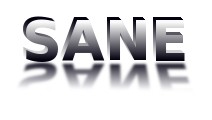‘Framework and Guidelines for the use of Social Media’ addresses
all the aspects on this subject in great detail. However, for practitioners, it
may become easier to work out with the six elements of the framework, if the following
two very closely related areas are taken into account:-
a) Design of Information Management (for
the organization) and
b) Building Capacity for Formal
Communication (within the organization)
In fact, these two areas can become a two layered platform
(with Design of Information Management being the base layer), on the top of
which, the six elements of the framework can be placed. In this way, the pictorial representation of
the framework (Figure 2 in the document ‘Framework and Guidelines for the use
of Social Media’) may get modified for practical implementation as shown in the
figure below:-
Source – Figure 2 of Framework and Guidelines for the use of Social Media (http://deity.gov.in/sites/upload_files/dit/files/Approved_Social_Media_Framework_and_Guidelines.pdf
) – Modified by Author to illustrate how practitioners can use the framework
for ease of implementation.
Brief on the
areas are given below:-
a)
Designing Information Management
For use of social media as an information channel, a smooth
information management with clear understanding of information and its significance
within an organization is required. Even though designing information
management is a complex matter and is linked to organizational design, in
general, following could be important points:-
1)
Classification of Information
An analysis of information with respect to various parameters (like
criticality, target, and confidentiality) related to generation, propagation
and consumption of information may lead to Classification of Information for an
organization. Statistical analysis of historical data could be useful in
understanding organizational data from different aspects and hence would help
in the classification efforts.
2)
Design of Information Flow
Clear Information Flow paths based on organizational design with
well defined information access criteria can be helpful in ascertaining
integrity of information. Generally, government organizations have a defined
mechanism for information flow. A review (and may be re-engineering) on the
same in the light of modern communication medium could be helpful.
3)
Version Maintenance of Informative
Documents
Accessibility of version maintained documents to authorized
persons will help in coherence in information across the department.
4)
Information Management Audit
Audit of Information Management for a department will help in
ensuring availability, accessibility and integrity of information in a
department.
b)
Building Capacity for Formal Communication within Organization
It needs training and proper understanding to imbibe practice of
sensible, responsible, concise and clear communication through different medium
of written and verbal communications. Capacity Building for the same has to
become an integral part of efforts on Human Resource Development and Induction
Training.
Confident work force with thorough understanding of information
design (of the organization) along with their roles and responsibilities (with
respect to information and information flow) will be able to use social media
for government organizations in the best possible way.
Thus, if the
organization has a pre-existing document on ‘Design of information Management’
this could be taken as an input for implementing the Social Media Framework. If
there is no such document, working out a very basic design could be considered
for the purpose of simplifying implementation of the framework. In particular,
such an effort will be helpful in relation to following elements of the
framework:-
- Objective
- Governance
- Communication Strategy
Similarly, if the organization has skill development programs
targeted at developing skills for Formal Communications across different media,
an inclusion of social media would prepare the workforce for the new challenge.
In case, the organization does not have such skill development programs in
place, sensitization and capacity building on the same may be required at all
levels. A thorough understanding on information management within the
department would be helpful in relation to following elements of the
framework:-
- Governance
- Institutionalization
REFERENCES:-
/************************/


No comments:
Post a Comment